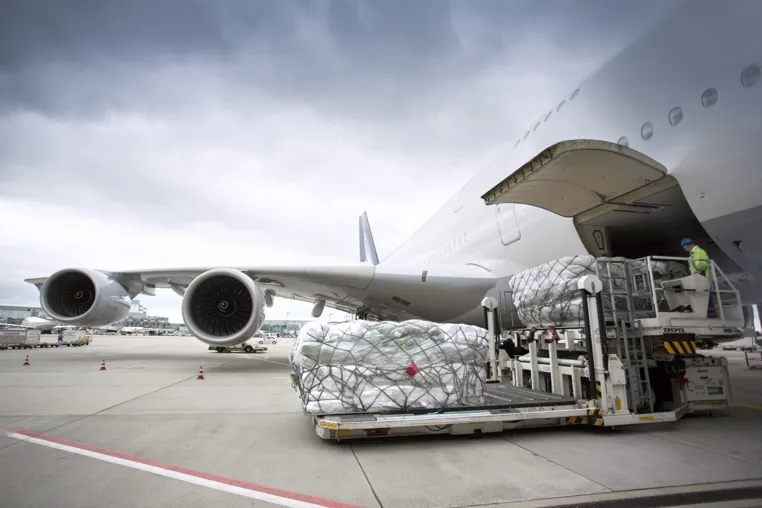- By TOP CHINA FREIGHT
- September 18, 2025
- Air Freight, Shipping
Table of Contents
When businesses consider international trade, one common question arises: how long does air freight take from China to US? Transit times vary depending on distance, customs clearance, cargo type, and the chosen service. While air freight offers a faster alternative to sea shipping, importers must understand timelines, influencing factors, and best practices to ensure smooth deliveries. This article explains average durations, compares shipping methods, and offers practical strategies to optimize logistics.

What Is the Usual Transit Time for Air Freight?
Air freight from China to the United States typically takes 3 to 7 days door-to-door. Direct flights from major Chinese cities such as Shanghai, Shenzhen, and Guangzhou to U.S. hubs like Los Angeles, Chicago, and New York may deliver in as little as 2 to 3 days. However, shipments involving layovers, customs delays, or inland trucking can extend the total timeline.
| Route | Direct Transit Time | With Layovers/Customs |
|---|---|---|
| Shanghai → Los Angeles | 2–3 days | 4–6 days |
| Shenzhen → Chicago | 3–4 days | 5–7 days |
| Guangzhou → New York | 3–4 days | 5–7 days |
Which Factors Affect Air Freight Transit Times?
Direct routes are faster than connecting flights.
Delays may occur if documentation is incomplete.
Hazardous or restricted goods require special handling.
Demand during holidays increases processing times.
Storms or typhoons may cause rescheduling.
What Are the Main Airports Used in Air Freight?
China and the U.S. have multiple international airports handling high cargo volumes.
China’s Major Airports for Air Cargo:
- Shanghai Pudong International Airport (PVG)
- Guangzhou Baiyun International Airport (CAN)
- Shenzhen Bao’an International Airport (SZX)
- Beijing Capital International Airport (PEK)
U.S. Cargo Hubs:
- Los Angeles International Airport (LAX)
- Chicago O’Hare International Airport (ORD)
- New York JFK International Airport (JFK)
- Miami International Airport (MIA)
Choosing the right route can reduce delivery schedules and streamline logistics.
Do Customs and Documentation Affect Delivery Time?
Yes, customs clearance is a critical step that influences air freight timelines. To avoid delays, shippers should prepare the following documents:
| Document | Purpose |
|---|---|
| Commercial Invoice | Declares shipment value |
| Packing List | Describes package contents |
| Air Waybill | Contract of carriage |
| Import License (if applicable) | Required for restricted goods |
| Certificates of Origin | Confirms country of production |
Properly completed paperwork ensures customs clearance within 24–48 hours. Any errors may cause delays of several days.
Why Do Shipping Costs Impact Transit Times?
Although cost does not directly determine flight speed, budget allocation influences route choice. For example:
Premium Services:
Direct flights with priority handling reduce transit time.
Economy Options:
Indirect flights or consolidated cargo may extend delivery.
Therefore, companies must weigh the balance between cost and efficiency to optimize their supply chain strategy.
How to Shorten Air Freight Transit Time?
Secure cargo space ahead of peak seasons.
Minimize layovers and transit delays.
Avoid customs bottlenecks with complete paperwork.
Benefit from expertise in handling logistics challenges.
Consider alternative hubs to bypass congestion.
What Types of Cargo Benefit Most from Air Freight?
Air freight is best suited for:
- High-value goods (electronics, jewelry)
- Perishable items (seafood, flowers, pharmaceuticals)
- Urgent shipments (medical equipment, fashion items)
- Low-volume, time-sensitive cargo
For bulk and low-cost items, sea freight remains more cost-effective.
Case Study: Electronics Shipment from Shenzhen to Los Angeles

A U.S. retailer urgently required smartphones from Shenzhen to Los Angeles before a holiday sale. By selecting air freight with direct service, the cargo reached LAX in 3 days. Customs clearance took another 2 days, making the total transit time 5 days door-to-door. Compared with sea freight, which would have taken 30+ days, the company was able to meet market demand and secure higher revenue.
What Are the Pros and Cons of Air Freight?
| Pros | Cons |
|---|---|
| Fast delivery (3–7 days) | High cost compared to sea freight |
| Reliable schedules | Limited cargo capacity |
| Safer for valuable items | Weather-sensitive |
| Reduced inventory storage | Restrictions on hazardous goods |
Understanding these advantages and disadvantages helps businesses decide whether air freight suits their needs.
Should Businesses Use Air Freight Regularly?
Regular use of air freight depends on your business model. If speed and reliability are critical, air freight ensures consistent supply chains. However, for bulk imports where cost efficiency is the priority, sea freight remains preferable. Many companies adopt a hybrid model, shipping urgent goods by air while sending bulk cargo by sea.
Conclusion
So, how long does air freight take from China to US? On average, shipments require 3 to 7 days, depending on route, customs, and service type. Direct flights shorten delivery, while indirect routes may take longer. Importers should prepare documents in advance, choose the right airport, and partner with experienced freight forwarders to ensure smooth logistics. Ultimately, air freight offers businesses the speed and reliability needed to meet urgent market demands.
Need a Shipping Quote?
If you want expert guidance and peace of mind, our team is ready to assist.
TJ China Freight offers tailored solutions to help businesses of all sizes ship more reliably from China.

FAQ
Q1:What is the fastest air freight option from China to US?
The fastest option is express air freight or direct cargo flights, which may deliver in 2–3 days for certain routes.
Q2:Can small businesses use air freight for imports?
Yes, small businesses often rely on air freight for smaller shipments of high-value or urgent goods. Consolidation services make it affordable.
Q3:How do customs delays affect air freight?
If documentation is incomplete, customs may hold goods for several days. Complete paperwork ensures clearance within 24–48 hours.
Q4:Is air freight always more reliable than sea freight?
Generally, yes. Air freight has more predictable schedules, but weather or peak demand may still cause minor delays.
Q5:What is the cost difference between air and sea freight?
Air freight is usually 5–6 times more expensive than sea freight, but it saves several weeks in transit.
